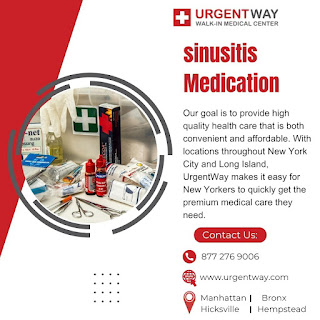What are the pros and cons of Zerona?
What
are the pros and cons of Zerona?
As of my last knowledge update in
September 2021, Zerona is a non-invasive body contouring procedure that uses
low-level laser therapy (LLLT) to target and shrink fat cells. It's important
to note that advancements and updates might have occurred since then, so I
recommend consulting with a medical professional or researching the latest
information for the most accurate details. Here are some potential pros and
cons of Zerona based on information available up to 2021.Get advanced zerona laser treatment under the supervision Of urgentway healthcare professionals.
Pros of Zerona:
Non-invasive: Zerona is a non-surgical procedure, meaning it doesn't involve
incisions, anesthesia, or significant downtime. This can be appealing to
individuals who want to avoid the risks and recovery associated with surgery.
Minimal discomfort: Most people undergoing Zerona treatment report minimal discomfort
during the procedure, as it generally involves the use of low-level lasers
without causing pain or downtime.
Convenience: Zerona treatments are typically performed on an outpatient basis,
allowing individuals to return to their normal activities immediately after the
session.
Targeted fat reduction: Zerona aims to target specific areas of the body where excess fat
is present, which can be beneficial for people looking to reduce localized fat
deposits.
Potential for inch loss: Some individuals may experience a reduction in inches or
circumference in treated areas over a series of sessions. However, the degree
of inch loss can vary from person to person.
Cons of Zerona:
Variable results: The effectiveness of Zerona can vary among individuals, and not
everyone may achieve significant or consistent results. Factors such as body
type, metabolism, and adherence to recommended lifestyle changes can influence
outcomes.
Limited fat reduction: Zerona is not intended for significant weight loss. It is designed
for modest fat reduction in specific areas. People seeking major weight loss
may not find Zerona to be a suitable option.
Cost: Zerona treatments can be expensive, especially when multiple
sessions are required to achieve noticeable results. Insurance typically does
not cover these types of cosmetic procedures.
Temporary results: Like many non-surgical fat reduction procedures, the results from
Zerona may not be permanent. Maintaining a healthy diet and exercise routine is
important to help sustain the effects.
Multiple sessions required: Zerona typically requires a series of treatment sessions over a
few weeks to see potential results. This can be time-consuming and may require
commitment from the individual.
Limited scientific evidence: While some studies suggest potential benefits of Zerona, the
scientific evidence supporting its effectiveness and long-term outcomes is not
as extensive as that for more established procedures like liposuction.
It's crucial to consult with a
qualified medical professional before undergoing any cosmetic procedure,
including Zerona. They can provide personalized advice based on your individual
needs and help you make an informed decision about the most suitable treatment
options for your goals.
Both Zerona and
CoolSculpting are non-invasive body contouring procedures designed to reduce
localized fat deposits without surgery. However, they use different mechanisms
to achieve their effects. It's important to note that the effectiveness of
these procedures can vary from person to person, and what might be
"better" depends on individual preferences, goals, and medical
considerations. Here's a comparison of Zerona and CoolSculpting based on
information available up to September 2021:
Zerona:
Mechanism: Zerona uses
low-level laser therapy (LLLT) to target and shrink fat cells. The lasers are
applied externally to the skin, and the energy is absorbed by the fat cells,
causing them to release their contents, which are then metabolized by the body.
CoolSculpting:
Mechanism: CoolSculpting, also known as cryolipolysis, involves controlled
cooling of fat cells to freeze and destroy them. The body then naturally
eliminates the dead fat cells over time.
Ultimately, whether Zerona or
CoolSculpting is "better" depends on your specific goals,
preferences, and individual factors. It's important to consult with a qualified
medical professional who can assess your needs and provide personalized
recommendations. Keep in mind that advancements and updates may have occurred
since my last knowledge update in September 2021, so I recommend researching
the latest information and consulting with up-to-date sources when making your
decision.
What
happens during a Zerona treatment?
As of my last knowledge update in
September 2021, a Zerona treatment involves a non-invasive body contouring
procedure using low-level laser therapy (LLLT) to target and shrink fat cells.
Here's an overview of what typically happens during a Zerona treatment session:
Consultation: Before undergoing a Zerona treatment, you will likely have a
consultation with a qualified healthcare professional. During this
consultation, you will discuss your goals, medical history, and any concerns
you may have. The healthcare provider will determine if you are a suitable
candidate for the procedure.
Preparation: On the day of the treatment, you will be asked to wear protective eyewear to shield your eyes from the laser light.
Treatment Session:
You will lie down on a treatment bed
or table in a comfortable position.
The technician or healthcare
provider will position the Zerona device over the targeted areas of your body
where you want to reduce fat.
The Zerona device emits low-level
laser energy, which is directed towards the skin over the treatment areas.
The lasers are typically positioned
above the skin and do not require any incisions or contact with the body.
The lasers will penetrate the skin
and reach the underlying fat cells.
Laser Stimulation: The low-level laser energy is absorbed by the fat cells, causing
them to release their contents. This process is intended to create pores in the
fat cells, allowing the stored fatty acids to escape.
Metabolism and Elimination: Once the fat cells release their contents, the fatty acids and
other cellular debris are transported through the bloodstream and eventually
metabolized by the body's natural processes. The lymphatic system plays a role
in eliminating these waste products.
.png)
.png)


Comments
Post a Comment